8 Kid-Friendly Ideas for a Shared Sibling Bedroom
Designing a shared bedroom for siblings can be a delightful yet challenging task for any parent. It’s about striking the perfect balance between individuality and togetherness, ensuring that each child feels they have a space that reflects their personality while fostering a sense of unity and shared enjoyment.
This article explores eight innovative, kid-friendly ideas to create a harmonious and functional shared bedroom that siblings will love.
#1 – Create Personalized Spaces within a Shared Room
When siblings share a room, it’s essential to ensure that each child has their own personal space that they can call their own. Personalized spaces within a shared room can help siblings feel more comfortable and respected, even in a shared environment.
Ideas for Personalizing Spaces:
- Color Coding: Assign different color schemes or themes to each child’s area of the room. This can be as simple as choosing different bedding colors or as elaborate as painting walls in their favorite hues.
- Personal Wall Art: Encourage each child to select wall art or decorations that reflect their interests and personality. This could include framed artwork, posters of their favorite characters, or a display of their own creations.
- Customized Bedding: Let each child pick out their own bedding set that reflects their style. This is an easy and affordable way to give them each a sense of individuality within the shared space.
Tips for Implementing:
- Involve the children in the decision-making process. This not only ensures they’ll be happy with the result but also helps them feel valued and heard.
- Ensure that the personalization does not overwhelm the room. Strive for a balance between individual expression and a cohesive overall design.
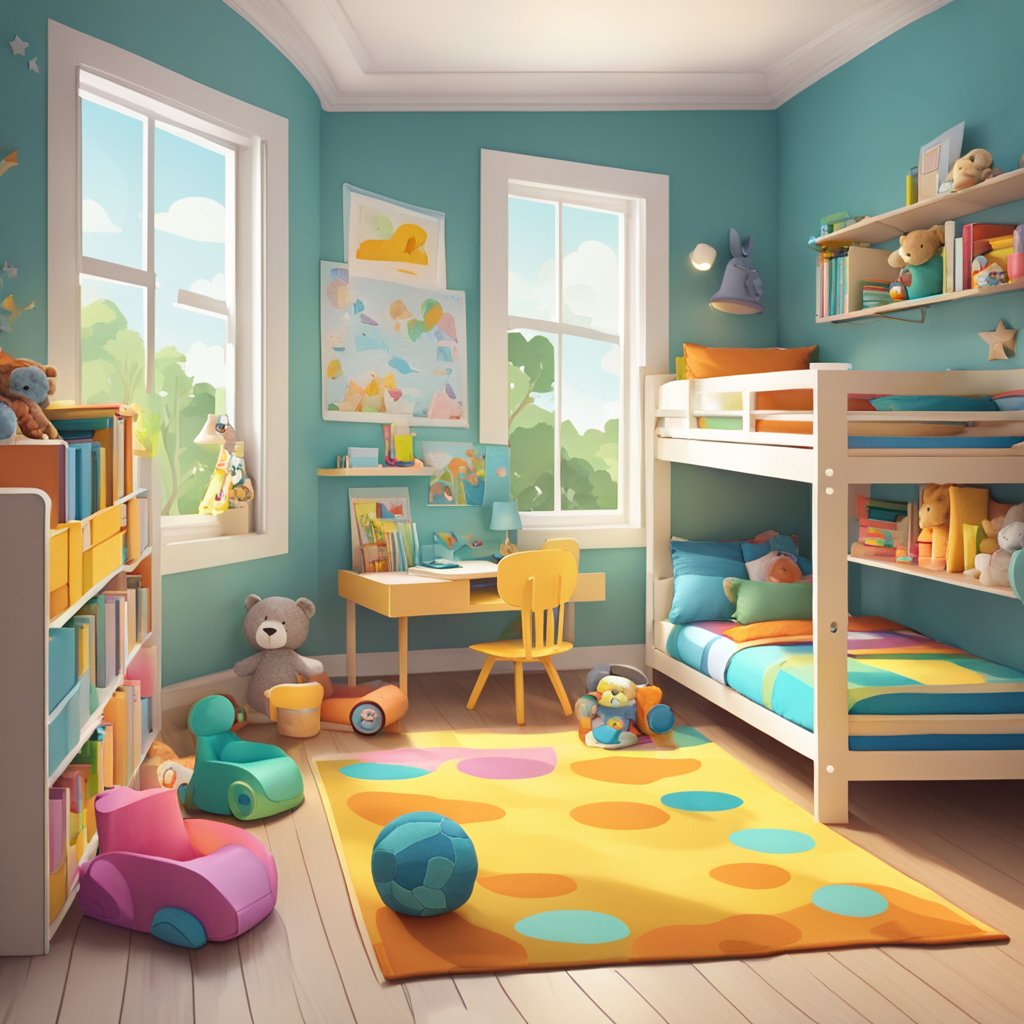
#2 – Use Space Efficiently with Bunk Beds
Bunk beds are a classic solution for shared bedrooms, offering a space-efficient way to accommodate sleeping areas for multiple children.
Benefits of Bunk Beds:
- Space-Saving Design: Bunk beds free up valuable floor space in a shared bedroom, which can then be used for play, study, or storage.
- Fun and Functional: Many kids love the novelty of bunk beds, and they can be a fun addition to a bedroom. Plus, modern designs come with added features like built-in storage or study areas.
Choosing the Right Bunk Bed:
- Safety First: Look for bunk beds with sturdy construction and safety features like guardrails and secure ladders.
- Age-Appropriate: Consider the age and maturity of your children when selecting a bunk bed. Very young children may not be ready for the top bunk.
- Style and Functionality: From traditional to modern, there’s a wide range of bunk bed designs. Consider options with additional features like under-bed drawers or convertible designs that can separate into two beds as children grow.
Making Bunk Beds Work:
- Ensure adequate ceiling height for a comfortable and safe bunk bed setup.
- Use beddings and accessories to personalize each bunk, giving each child their own unique space within the shared structure.
Bunk beds can be an excellent choice for a shared sibling bedroom, offering a practical, space-efficient, and enjoyable sleeping solution.
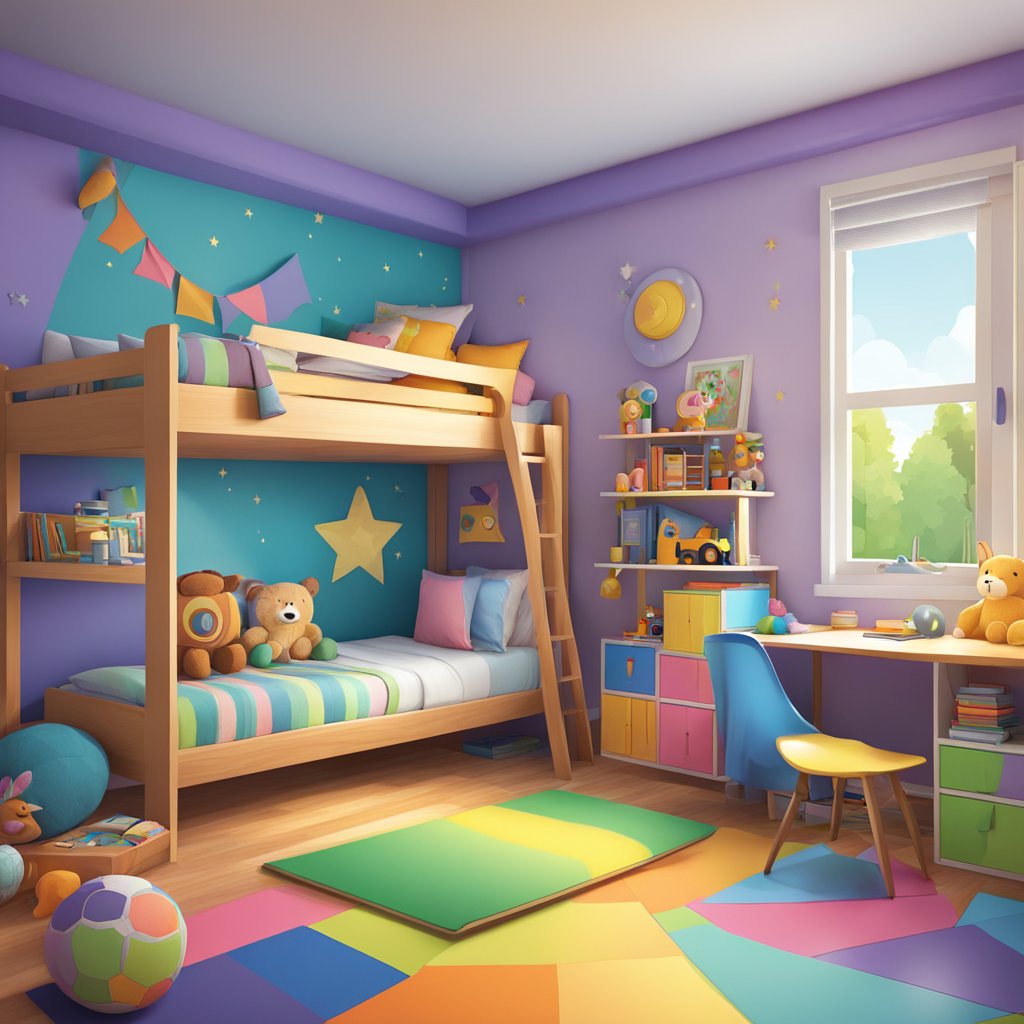
#3 – Incorporate Shared Play Areas
A shared sibling bedroom isn’t just about sleeping; it’s also a space for play and creativity. Designing a shared play area that both children can enjoy is a great way to foster a sense of harmony and cooperative play.
Designing a Fun and Functional Play Space:
- Central Play Area: Allocate a specific area in the room for play. This can be a corner or the center of the room, depending on the available space. Ensure it’s a neutral zone where both children feel welcome.
- Organized and Accessible Toy Storage: Use storage solutions like bins, shelves, or a toy chest to keep the play area tidy and toys accessible. Consider labeling storage with pictures or colors to help children find and put away toys easily.
- Flexible and Safe Furnishings: Choose furnishings that are safe and suitable for children of different ages. Bean bags, low tables, and soft rugs can create a comfortable environment for various activities.
Fostering Shared Play:
- Encourage activities that siblings can do together, like building blocks, arts and crafts, or board games.
- Regularly rotate toys to keep the play area fresh and engaging for both children.

#4 – Provide More Storage Solutions
In a shared bedroom, efficient storage solutions are key to keeping the space organized and clutter-free. This is especially important in a room where two personalities and sets of belongings coexist.
Smart Storage Ideas:
- Under-Bed Storage: Utilize the space under beds with drawers or storage boxes. This is perfect for stowing away seasonal clothing, extra bedding, or less frequently used toys.
- Personalized Compartments: In shared closets or shelving, assign each child their own compartment or section. This helps maintain individual spaces for their belongings and encourages responsibility for their upkeep.
- Multi-functional Furniture: Invest in furniture that doubles as storage, such as beds with built-in drawers, desks with shelving, or seating with hidden compartments.
Maintaining Organization:
- Involve your children in organizing their things. This can help them understand where everything goes and encourages them to keep their shared space tidy.
- Use labels or color coding to designate areas for each child’s belongings, making it easier for them to find and store their items.
With thoughtful storage solutions, a shared sibling bedroom can be a well-organized space that accommodates the needs and belongings of both children, making it easier to manage on a daily basis.
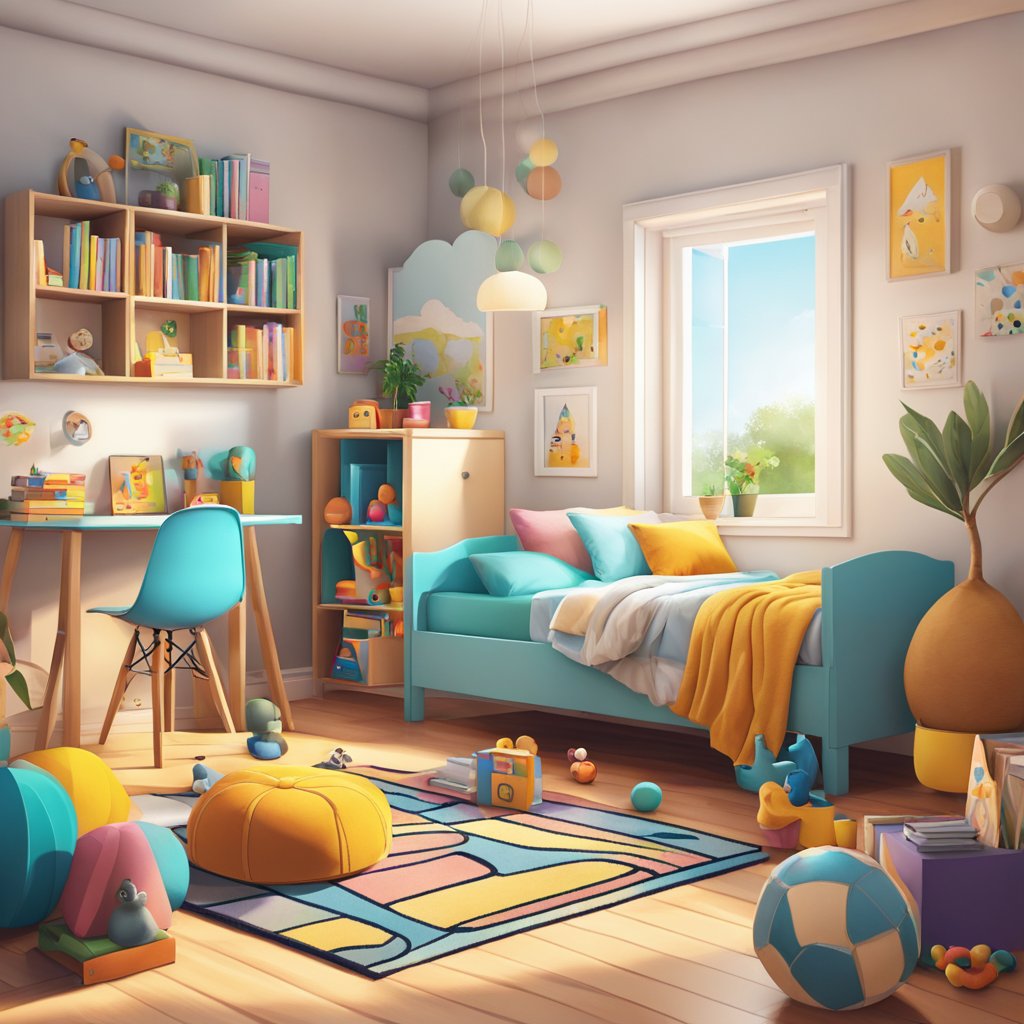
#5 – Design a Flexible Layout
A shared sibling bedroom needs to be adaptable, catering to the evolving needs of growing children. A flexible layout can accommodate changes in preferences, hobbies, and study habits over time.
Creating a Versatile Space:
- Modular Furniture: Opt for modular furniture that can be easily rearranged, repurposed, or expanded. This includes items like stackable shelves, adjustable desks, and convertible chairs.
- Defined yet Fluid Zones: While having distinct areas for sleep, play, and study is essential, ensure these zones can be adapted as children grow. For example, a play area can be converted into a study zone as kids start school.
Adapting to Changing Needs:
- Keep in mind the different stages of childhood. What works for preschoolers may not be suitable for school-aged children or teenagers.
- Choose decor and furniture that can be easily updated without needing a complete room overhaul. This could mean neutral walls with changeable art or bedding that can be updated as tastes change.
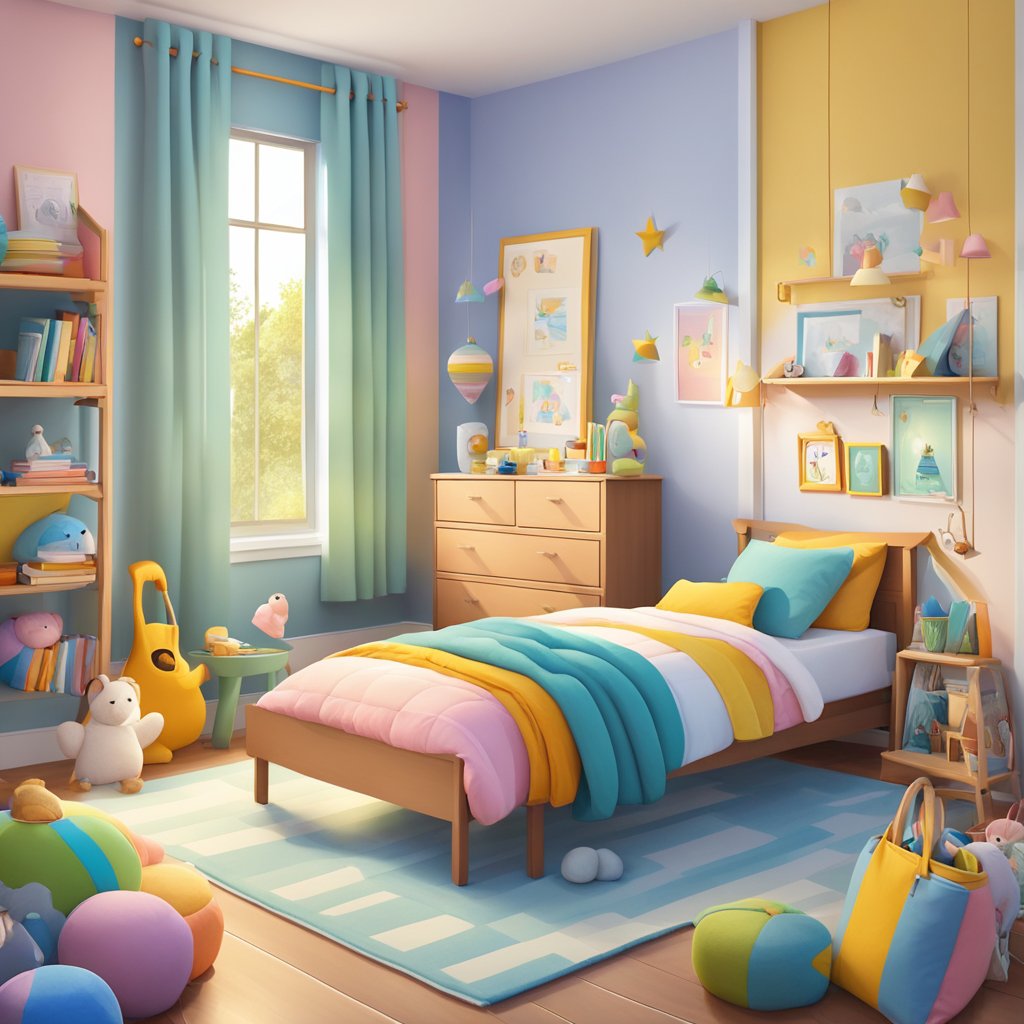
#6 – Balance Individuality and Togetherness in Decor
Decorating a shared sibling room presents a unique challenge: balancing individual tastes while maintaining a cohesive look. It’s important to create a space that both children feel is their own, yet doesn’t feel disjointed.
Harmonizing Individual Styles:
- Collaborative Decor: Involve both children in the decor process. This could mean allowing each child to choose their own bedding or wall art, while keeping a unified color scheme or theme throughout the room.
- Accent with Personality: Use accessories like pillows, rugs, or lampshades to add individual flair without overwhelming the room’s overall style.
Cohesive Yet Distinct:
- Choose a neutral base (like walls and flooring) and add pops of color or character that reflect each child’s personality.
- Consider symmetric layouts with personalized elements for each child, providing a sense of balance and equality in the room.
Decorating a shared bedroom in this way can help siblings feel respected and represented, fostering a positive shared living experience.
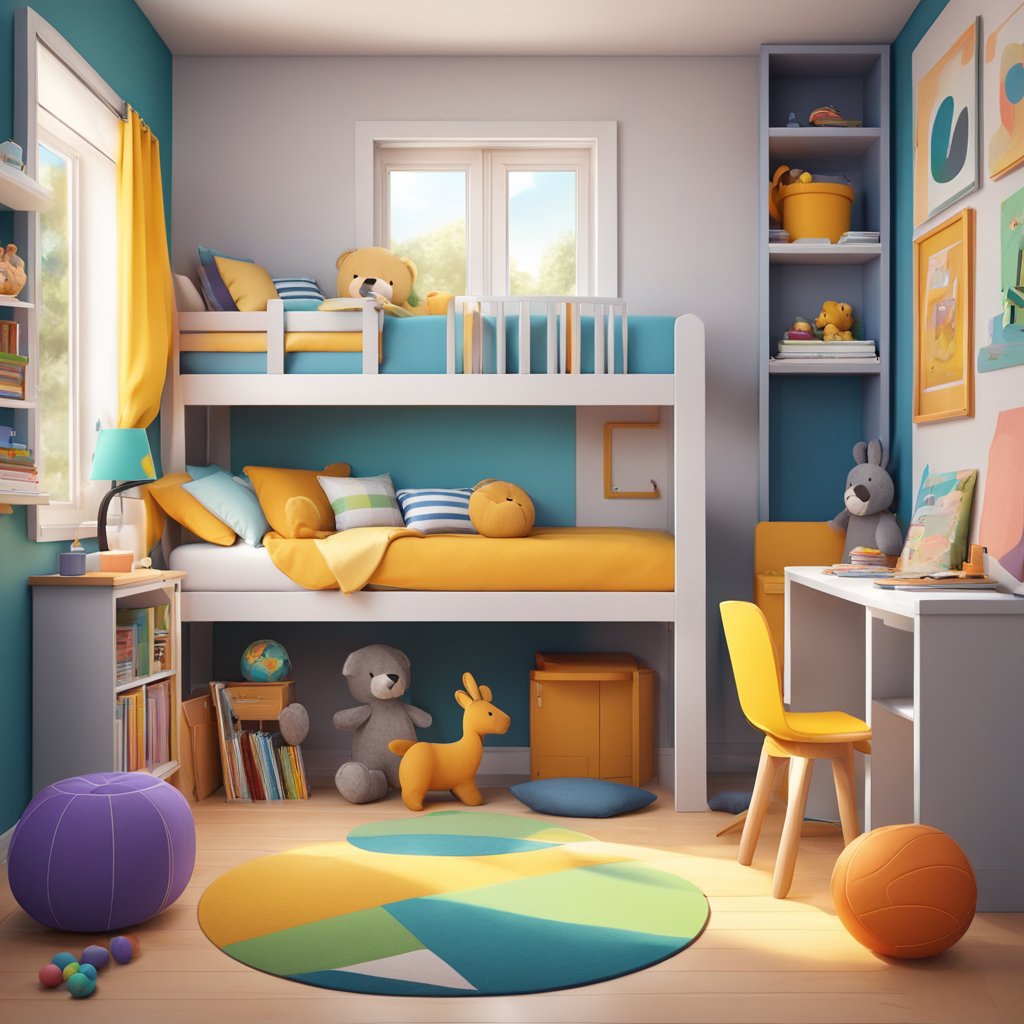
#7 – Utilize Vertical Space
In a shared sibling bedroom, making the most of vertical space can be a game-changer. This approach maximizes storage and play areas while maintaining enough room to move around comfortably.
Maximizing Vertical Potential:
- Wall Shelves and Hanging Organizers: Install shelves for books, toys, or display items. Wall-mounted organizers can hold smaller items like art supplies or accessories, keeping them accessible yet out of the way.
- Loft Beds: If space allows, consider loft beds. They free up floor space for desks, seating, or play areas underneath.
Creative Vertical Solutions:
- Decorative Hooks and Racks: Use wall hooks or racks for hanging clothes, bags, or hats. These can be both functional and decorative, adding to the room’s aesthetic.
- Vertical Play Elements: Think about wall-mounted play elements like climbing holds or magnetic boards, which provide entertainment without taking up floor space.

#8 – Create a Shared Study Area
As children grow, a shared bedroom may also need to accommodate study or homework activities. Setting up a functional and comfortable study area is essential, especially for school-aged children.
Designing a Productive Workspace:
- Individual Workstations: If space allows, provide each child with their own desk or workstation. This gives them personal space to focus and organize their school materials.
- Shared Desks: For smaller rooms, a long shared desk can be effective. Consider using desk organizers or dividers to give each child their own designated area.
Study Area Essentials:
- Adequate Lighting: Ensure the study area is well-lit with natural or artificial light to reduce eye strain.
- Ergonomic Seating: Choose chairs that are comfortable and supportive, especially important for maintaining good posture during study sessions.
Encouraging a Shared Learning Environment:
- Foster a collaborative learning atmosphere where siblings can help and motivate each other.
- Include shared resources like a communal bookshelf or a bulletin board for displaying schedules, artwork, or educational materials.
Let Us Know How We’re Doing!
Did this expertly prepared resource answer your question?
Do you have another question about home maintenance, home improvement projects, home appliance repair, or something else?
Get more information, send in questions and keep the discussion going by contacting the I’ll Just Fix It Myself company customer service team at at 1-800-928-1490 or Email us at [email protected]
